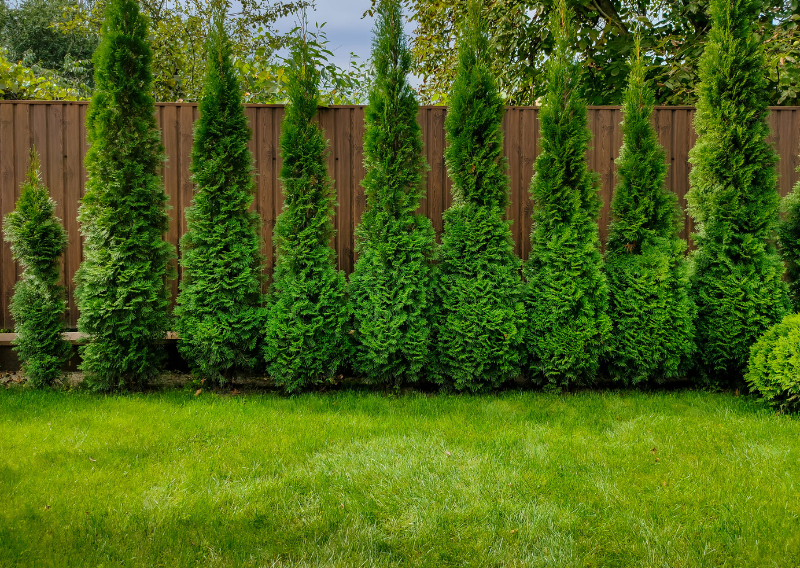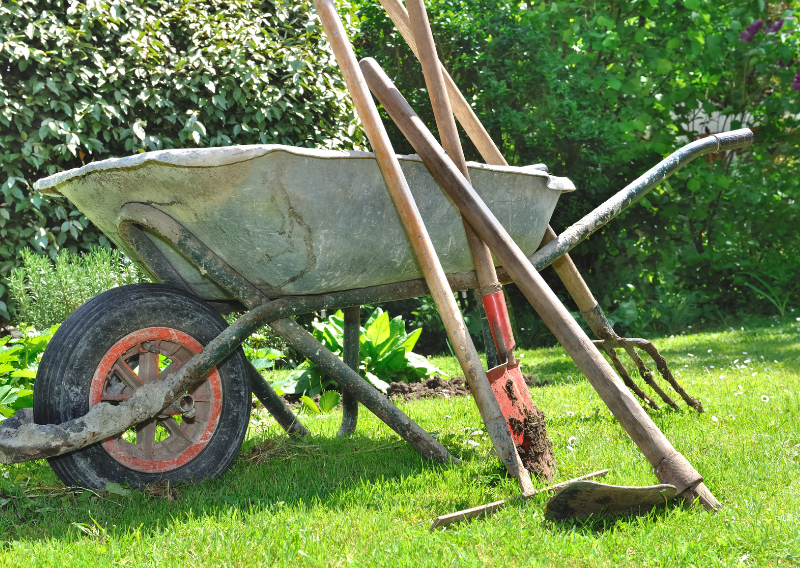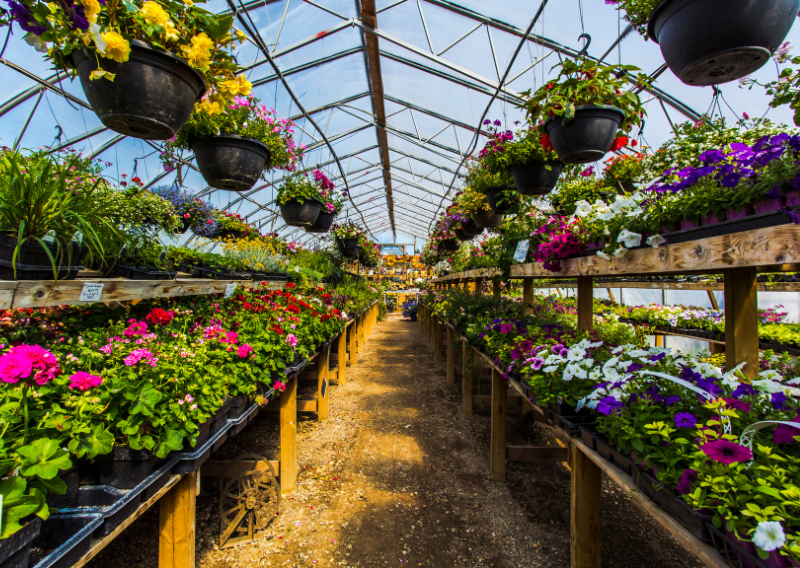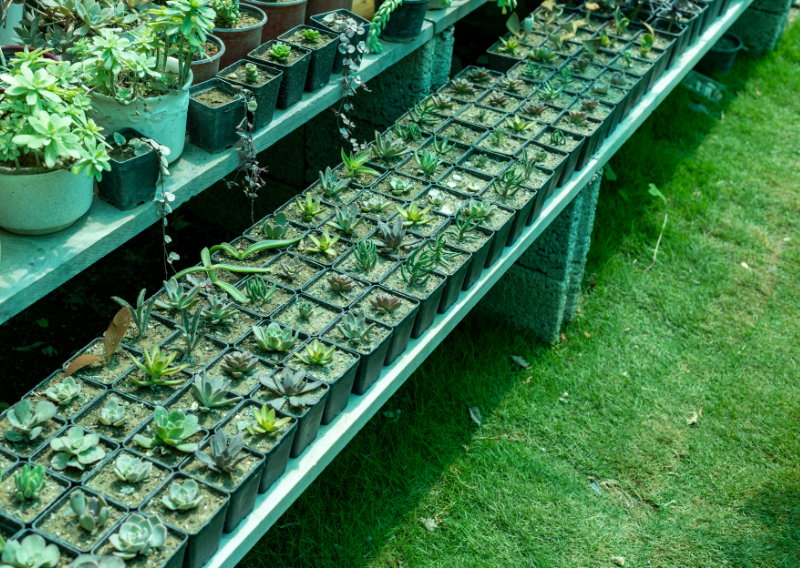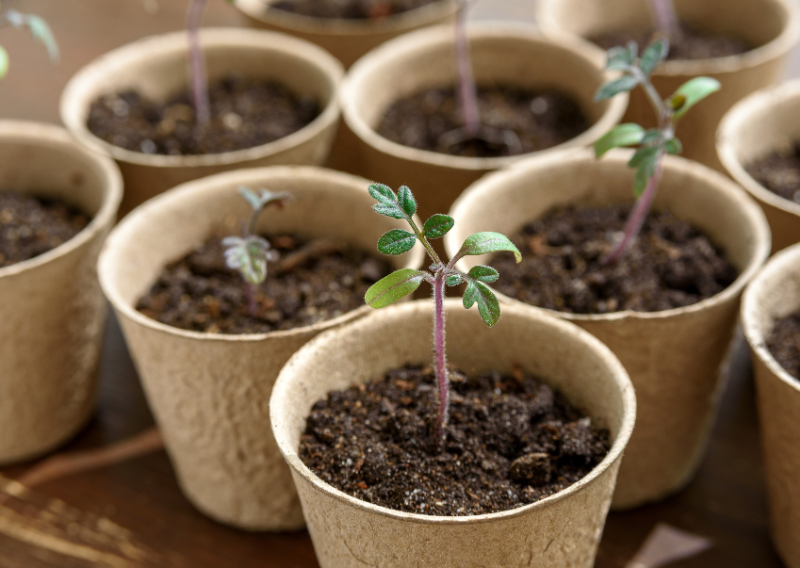
How To Do Eco-Friendly Gardening: The Benefits of Biodegradable Pots
More individuals are beginning to understand in recent years how crucial it is to make sustainable decisions, particularly in relation to landscaping and gardening. The usage of biodegradable pots and planters is one item that is swiftly taking on. Planting your preferred herbs, flowers, or vegetables in a container that doesn’t wind up as garbage is simply organically broken down and returned to the ground! This makes biodegradable pots not only environmentally friendly but also really handy. Let’s explore closely what these pots are, why they’re so fantastic, and some fascinating choices available.


What are Biodegradable Pots?
Biodegradable pots are just plant containers made from materials that break down on their own over time, usually when they come into contact with dirt, water, and microorganisms. These pots don’t leave behind a lot of waste like plastic or ceramic pots do. Instead, they break down and become part of the earth. Wood fiber, coconut coir, peat, rice husks, and even recycled paper are all common products.
Biodegradable pots are different because they last longer. Biodegradable pots are meant to do their job and then break down naturally, while plastic pots can last for decades in a dump. They can break down in a few months to two years, depending on the material and the weather. This means there is less plastic in the seas and soil.
Why Choose Biodegradable Pots?
Biodegradable pots aren’t just a trend for people who care about the environment; they’re a real change in how we plant and care for the environment. Even though traditional plastic pots are convenient, they can have a big effect on the world over time. They often end up in landfills, but they don’t break down. Instead, they add to plastic waste and may even release chemicals into the soil. Picking biodegradable pots over regular ones is a small action that has a big effect, helping the earth and being useful at the same time. Here are some strong reasons to switch to plants that break down naturally:
- Eco-Friendly and Sustainable
Biodegradable pots are made from natural materials that can be used again and again, like coconut coir, wood fiber, rice husks, peat, and sometimes even recycled paper. In other words, these pots don’t need resources that come from oil like plastic does. When you throw away biodegradable pots, they break down naturally into the dirt, leaving no harmful waste or residues behind. Also, choosing green materials lowers the need for nonrenewable resources, which helps make the production cycle more environmentally friendly.
- Reduced Plastic Waste
Millions of plastic pots are thrown away every year after only one use. Most of the time, these pots end up in dumps or fires, where they can release harmful chemicals. They can take hundreds or even thousands of years to break down in dumps. The biodegradable pots, on the other hand, break down in a few months to a few years, based on the material, the soil, and the weather. In the end, this means a cleaner, healthier world with a lot less trash in the oceans and landfills. - Healthier Plant Growth
A lot of recyclable pots are also good for plant health. Because they are made from natural materials, they automatically let more air and water get to the roots of plants. Better air helps roots grow strong and stops problems like root rot from happening. Also, some things, like coconut coir, wood fiber, or cow manure, break down and add nutrients to the soil, making it a better place to grow plants. As these things break down, they can release nutrients that help plants grow well, especially in the beginning. - Minimizes Root Shock During Transplanting
Plants can get stressed when they are moved from pots to the yard because their roots are often stressed during the process. This problem doesn’t exist at all with many biodegradable pots because they are made to be planted right into the dirt with the plant. In the yard, the pot breaks down over time, letting the roots spread out on their own without having to be taken out. This straight planting lessens transplant shock, which helps your plants get used to their new home more quickly. In the long run, this can make your plants healthier and stronger. - Convenience and Time-Saving
Biodegradable pots are very helpful for both experienced farmers and people who are just starting out. You can plant the whole biodegradable pot into the ground instead of taking plants out of plastic pots and worried about damaging the roots. This can help you save time, especially when you have a lot of plants to grow. These pots don’t need to be kept or used again, so they can help clear out your garden shed and make it a cleaner place.
Types of Biodegradable Pots
Different types of materials are used to make biodegradable pots, and each has its own benefits and traits. Here is a list of some common types:
- Coconut Coir Pots
- Made from coconut husks, these pots are a byproduct of the coconut industry. They are sturdy, retain moisture well, and can last a bit longer than some other biodegradable options.
- Benefits: Naturally resists fungal growth, and the coir itself can add structure to the soil as it decomposes.
- Best for: vegetables and herbs, especially in dry climates where moisture retention is helpful.
- Peat Pots
- Peat is harvested from peat bogs, which store carbon and have been around for thousands of years. Peat pots have been a staple for gardeners for a long time because of their soil-like texture and ability to hold moisture.
- Benefits: Great for seedlings; easy to transplant without disturbing roots.
- Best for: Starting seeds of almost any kind.
- Wood Fiber Pots
- These are made from compressed wood fibers, sometimes mixed with natural resins or biodegradable glue. They tend to be a bit more rigid, making them feel similar to traditional pots.
- Benefits: Sturdy, often last a full season and can add organic material to the soil.
- Best for: flowers and annuals, especially those that need sturdy support.
- Rice Husk Pots
- Created from rice husks bound together by natural binders, these pots are becoming a trendy option because they are durable yet completely compostable.
- Benefits: Long-lasting, sustainable, and unique in appearance.
- Best for: ornamental plants, succulents, and flowers.
- Cow Manure Pots
- It might sound strange, but pots made from sterilized cow manure are great for gardening. They’re sturdy enough to hold up while seedlings grow and eventually break down in the soil, adding nutrients.
- Benefits: Provides a natural fertilizer boost to the soil and promotes healthy plant growth.
- Best for: vegetable seedlings, herbs, and flowers.
- Recycled Paper Pots
- Made from compressed recycled paper, these are often the most budget-friendly biodegradable option. They aren’t the longest-lasting, but they work well for short-term use and are easily compostable.
- Benefits: super lightweight, budget-friendly, great for large-scale projects.
- Best for: Starting seeds, quick-growing plants.
How to Use Biodegradable Pots
Biodegradable pots are mostly beginner-friendly, but there are a few tricks to get the most out of them.
- Don’t Overwater: Biodegradable pots are more likely to absorb water than traditional pots, so it’s easy to overwater. Keep an eye on moisture levels.
- Plant the Whole Pot: When your plant is ready to go in the garden, plant the entire pot if it’s one designed for in-ground planting. This helps avoid disturbing the roots and gives them a stable transition.
- Break Up Rigid Pots: Some biodegradable pots, like wood fiber pots, can be more rigid. Breaking up the pot slightly before planting it can help roots spread more easily.
- Choose the Right Material: Different plants have different needs. Choose a potting material that complements your plant’s growth pattern and moisture preferences.
Pros and Cons of Biodegradable Pots
Like anything, biodegradable pots have their own pros and cons. Here’s a quick look:
Pros
- Eco-Friendly: They reduce plastic waste and often use renewable resources.
- Easy Planting: You can transplant directly into the soil without disturbing the plant.
- Adds Nutrients: Certain materials, like manure and coconut coir, can add nutrients to the soil.
- Compostable: Many types can be tossed into compost piles after use, adding organic material back into the ecosystem.
Cons
- Short Lifespan: If you’re used to pots that last years, biodegradable pots may feel like they need replacing often.
- Water Sensitivity: Since they absorb moisture, biodegradable pots can break down more quickly if left overly wet.
- Price: Some types, like coconut coir and rice husk pots, can be pricier than plastic, though it’s often balanced out by their environmental benefits.
Where to Buy Biodegradable Pots
It’s easier than ever to find biodegradable pots because they are becoming more popular. Online stores like Amazon have a good selection, but gardening stores and websites that sell eco-friendly home supplies may have a wider choice of items that fit your needs. It’s possible to find them at a nearby farm as well, especially if it focuses on eco-friendly gardening. It might cost a little more than plastic pots, but the peace of mind that comes from knowing you’re being good to the earth is worth it.
Caring for Biodegradable Pots
Because they break down faster than plastic pots, biodegradable pots need a little extra care. To make them last as long as possible before you put them, follow these tips:
- Keep Them in a Shaded Area: Sunlight can make biodegradable materials dry out and deteriorate faster.
- Monitor Moisture: While plants in plastic pots might be fine if you leave them in a saucer of water for a while, biodegradable pots can get too soggy. Avoid leaving them in standing water.
- Use a Tray or Liner: If you’re growing seedlings indoors, place biodegradable pots on a tray to catch excess moisture. This protects surfaces and can prevent the pot from breaking down too quickly.
Fun DIY: Making Your Own Biodegradable Pots
You could make your own recyclable pots at home if you’re feeling crafty. You can use everyday things like toilet paper rolls or even newspapers. Start with this easy-to-follow guide:
- Newspaper Pots: Take a few pages of the newspaper, roll them around a jar or can to create a cylinder, and fold them in one end to create a base. It’s cheap, easy, and compostable.
- Toilet Paper Rolls: Cut a toilet paper roll in half, then cut small slits around one end and fold them inward to form a base. They’re perfect for starting seeds.
Biodegradable pots and planters are a great way to garden in a world that is becoming more aware of how our actions affect the earth. They are a convenient and eco-friendly option to plastic pots that gardeners can use to help cut down on waste. You’ll be able to find the right biodegradable item for your gardening needs since there are so many kinds and uses for them.
Happy gardening!

